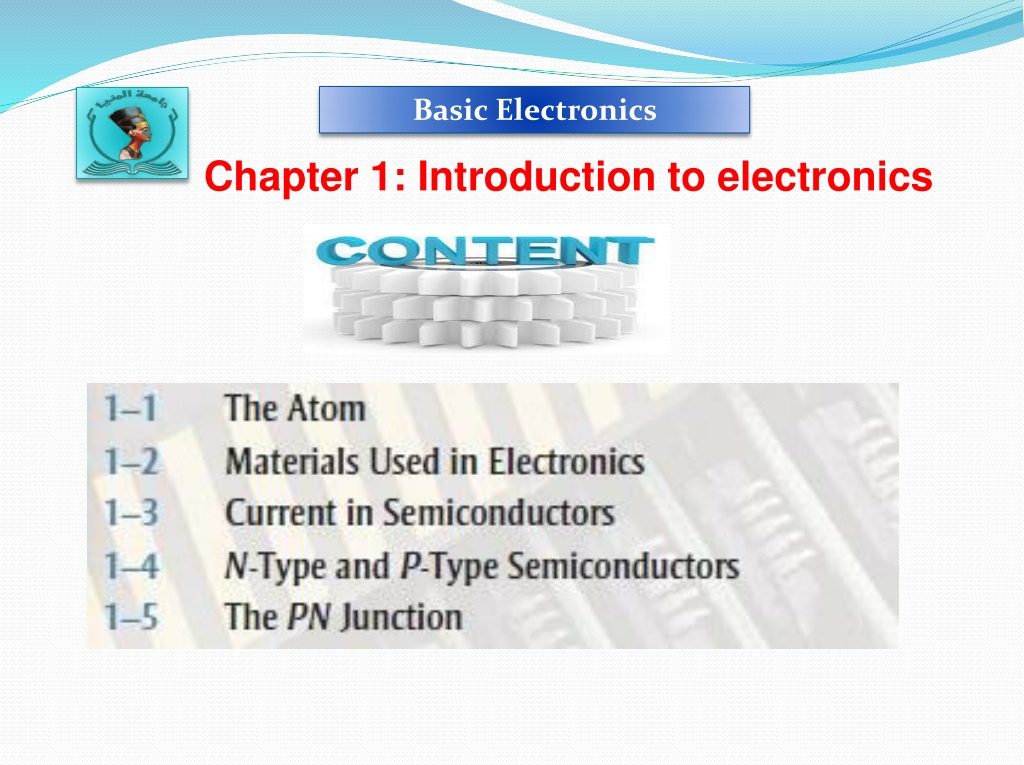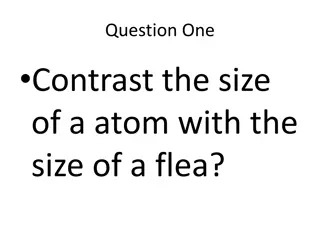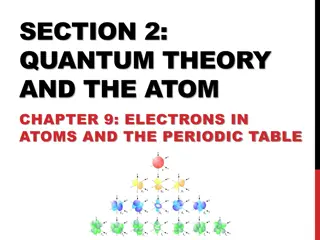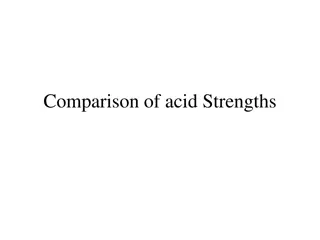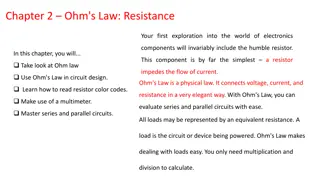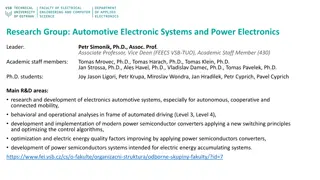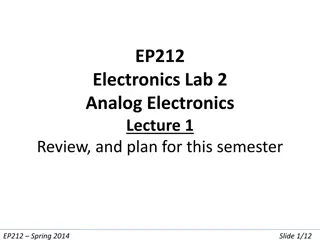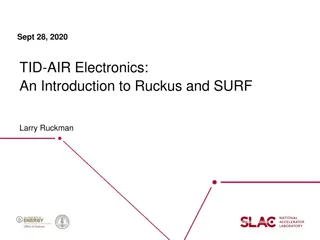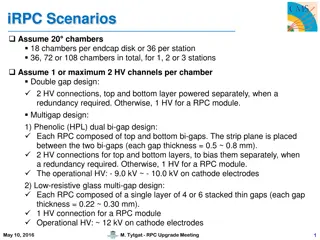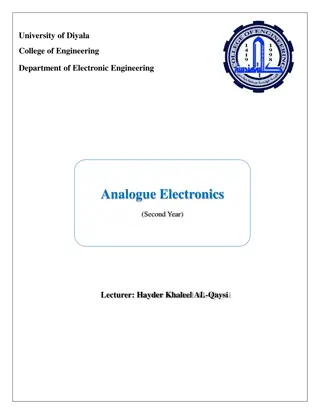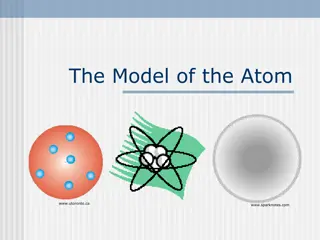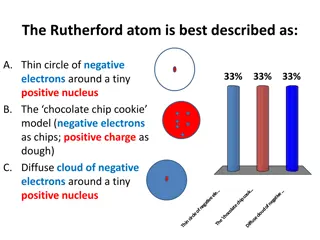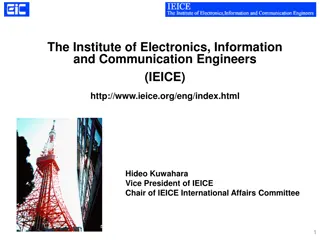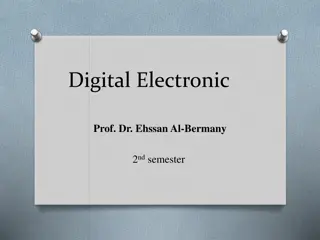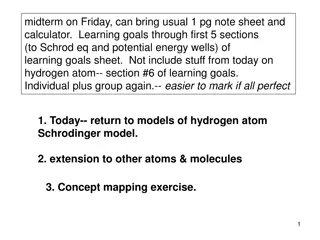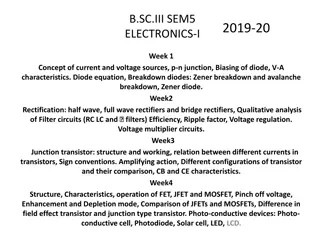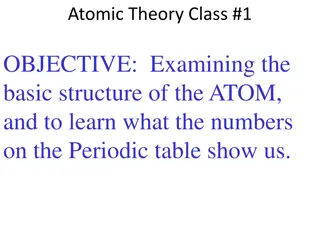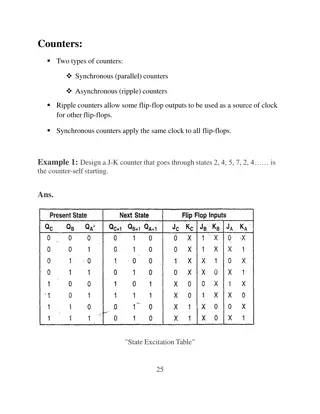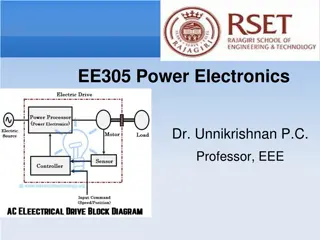Understanding the Basics of Atom Structure in Electronics
Learn about the fundamental concepts of atom structure in electronics, including the components of atoms, the Bohr model, electron orbits, energy levels, valence electrons, and more. Understanding these principles is essential for grasping the underlying mechanisms of electronic devices.
Download Presentation

Please find below an Image/Link to download the presentation.
The content on the website is provided AS IS for your information and personal use only. It may not be sold, licensed, or shared on other websites without obtaining consent from the author. Download presentation by click this link. If you encounter any issues during the download, it is possible that the publisher has removed the file from their server.
E N D
Presentation Transcript
Basic Electronics Chapter 1: Introduction to electronics
Atom Proton Electron Shell Valence Ionization Free electron Orbital Insulator Conductor Semiconductor Silicon Crystal Hole Doping PN junction Barrier potential
All matter is composed of atoms; all atoms consist of electrons, protons, and neutrons except normal hydrogen, which does not have a neutron. The atom was thought to be a tiny indivisible sphere.
The Bohr Model An atom* is the smallest particle of an element that retains the characteristics of that element. The nucleus consists of positively charged particles called protons and uncharged particles called neutrons. The basic particles of negative charge are called electrons. Atomic Number The atomic number equals the number of protons in the nucleus, which is the same as the number of electrons in an electrically balanced (neutral) atom
The Bohr model of an atom showing electrons in orbits around the nucleus, which consists of protons and neutrons.
Electrons and Shells Electrons orbit the nucleus of an atom at certain distances from the nucleus. Electrons near the nucleus have less energy than those in more distant orbits. Each discrete distance (orbit) from the nucleus corresponds to a certain energy level. In an atom, the orbits are grouped into energy levels known as shells. Each shell has a fixed maximum number of electrons.
The Maximum Number of Electrons in Each Shell (Ne) : is the maximum number of electrons. n :is the number of the shell Illustration of the Bohr model of the silicon atom.
Valence Electrons Electrons that are in orbits farther from the nucleus have higher energy and are less tightly bound to the atom than those closer to the nucleus. electrons in this shell are called valence electrons Ionization The removal or addition of an electron from or to a neutral atom so that the resulting atom (called an ion) has a net positive or negative charge.
The Quantum Model * The quantum model is a statistical model and very difficult to understand or visualize. *In the quantum model, each shell or energy level consists of up to four subshells called orbitals, which are designated s, p, d, and f. Orbital s can hold a maximum of two electrons, orbital p can hold six electrons, orbital d can hold ten electrons, and orbital f can hold fourteen electrons. Each atom can be described by an electron configuration table
EXAMPLE 11 Using the atomic number from the periodic table in Figure 1 3, describe a silicon (Si) atom using an electron configuration table.
12 MATERIALS USED IN ELECTRONICS For purposes of discussing electrical properties, an atom can be represented by the valence shell and a core that consists of all the inner shells and the nucleus.
Insulators : An insulator is a material that does not conduct electrical current under normal conditions. Valence electrons are tightly bound to the atoms; therefore, there are very few free electrons in an insulator. Examples of insulators are rubber, plastics, glass, mica, and quartz. Conductors: A conductor is a material that easily conducts electrical current. As copper (Cu), silver (Ag), gold (Au), and aluminum (Al), which are characterized by atoms with only one valence electron very loosely bound to the atom. Semiconductors :A semiconductor is a material that is between conductors and insulators in its ability to conduct electrical current. A semiconductor in its pure (intrinsic) state is neither a good conductor nor a good insulator. Single-element semiconductors are antimony (Sb), arsenic (As), astatine (At), boron (B), polonium (Po), tellurium (Te), silicon (Si), and germanium (Ge).
Band Gap The difference in energy between the valence band and the conduction band is called an energy gap or band gap.
Comparison of a Semiconductor Atom to a Conductor Atom
The valence electron in the copper atom feels an attractive force of 1 compared to a valence electron in the silicon atom which feels an attractive force of 4. Therefore, there is more force trying to hold a valence electron to the atom in silicon than in copper. The copper s valence electron is in the fourth shell, which is a greater distance from its nucleus than the silicon s valence electron in the third shell. Recall that electrons farthest from the nucleus have the most energy. The valence electron in copper has more energy than the valence electron in silicon. This means that it is easier for valence electrons in copper to acquire enough additional energy to escape from their atoms and become free electrons than it is in silicon.
